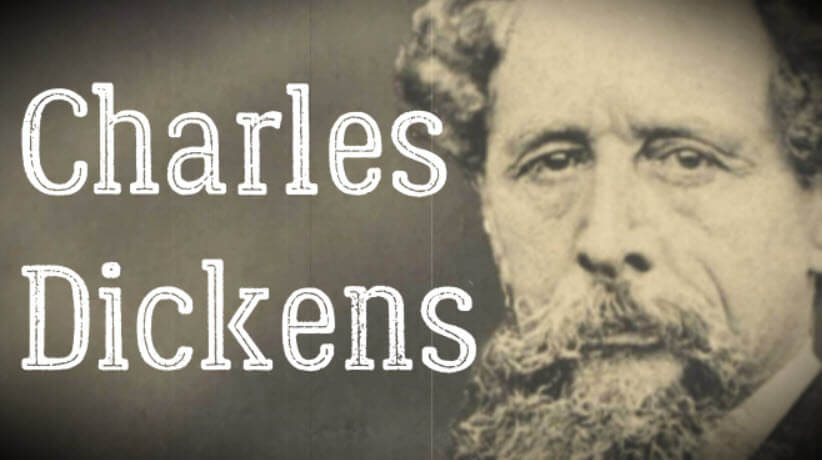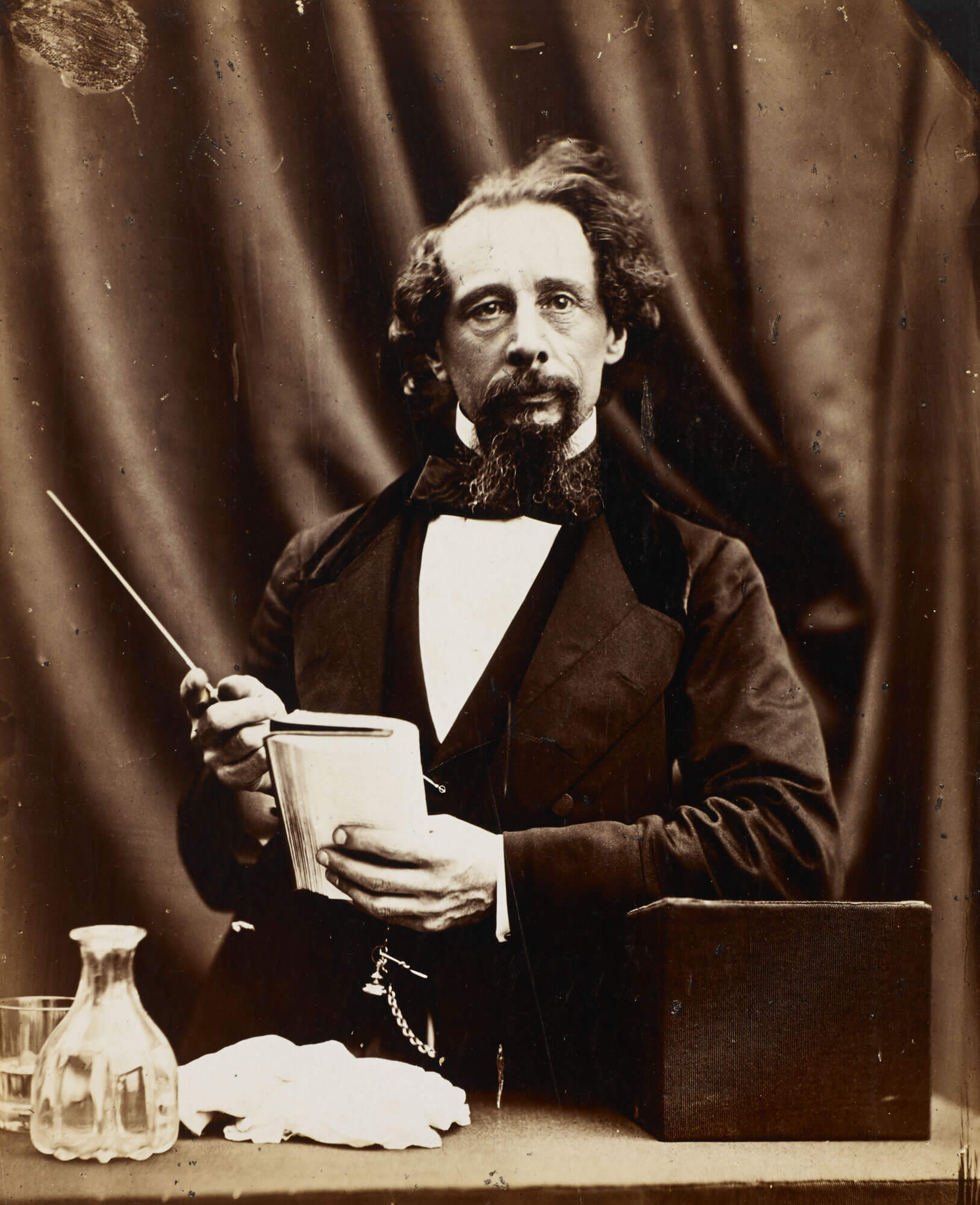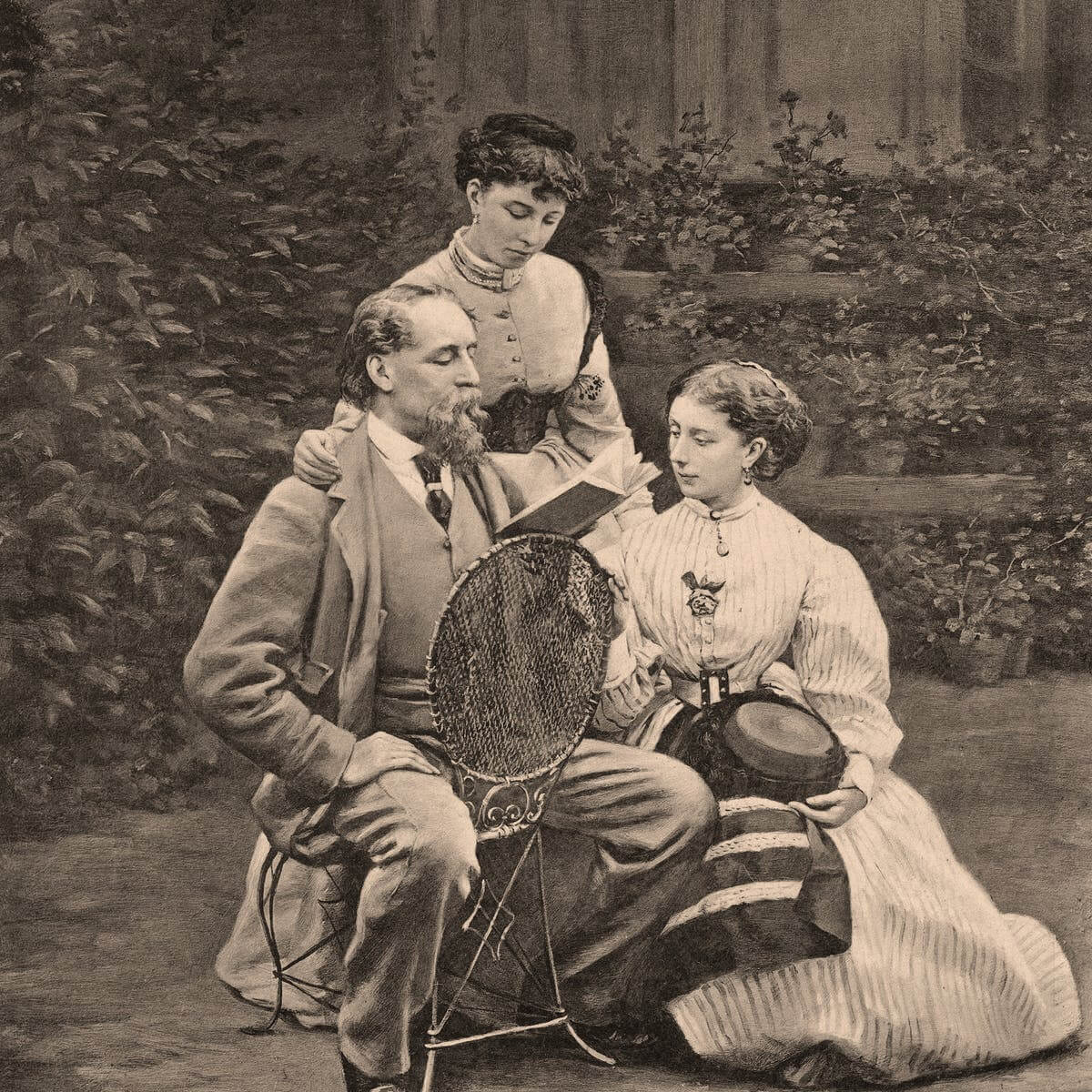Who was Charles Dickens? What did Charles Dickens do? Information on the biography, detailed life story and works of Charles Dickens.
Charles Dickens; (1812-1870), English novelist, who holds an outstanding position in the history of literature because of the breadth of his appeal and the fertility of his invention. Many of the characters he created—such as Sam Wel-ler, Uriah Heep, Mr. Micawber, Mrs. Gamp, and Mr. Pecksniff—have entered popular mythology, and many of his sayings have become part of everyday language. Translations of his works have proliferated; his novels have been dramatized, filmed, and adapted into musicals.
Dickens’ unique combination of humor, pathos, and humanitarian purpose made him the most popular writer of his day—a national figure read and esteemed by people in all walks of life. A later generation, reacting against him, labeled him “one of those Victorian scarecrows with ludicrous Freudian flaws,” and saw him as a showman wallowing in facile jokes and sickly sentimentality. In more recent times, however, he has been taken very seriously, both as a literary artist and as a social analyst. Literary criticism has emphasized the symbolical, surrealist, and at times almost hallucinatory qualities of his novels, which connect him with modernist trends and with such masters of fiction as Dostoyevsky and Kafka. Dickens’ anatomy of Victorian society— industrialized, money-oriented, and self-important—has given him a place in the great tradition of morally and socially responsible novelists.

LIFE
Early Years.
Charles Dickens was born at Portsea, near Portsmouth, on Feb. 7, 1812, the second child and eldest son of John and Elizabeth Dickens, neither of whom had any literary inclinations. The somewhat ambiguous soçıal position of his parents has led to the supposition that Dickens suffered from social maladjustment throughout his life. His mother was of middle-class origin; both his paternal grandparents were domestic servants. His father, a clerk in the Navy Pay Office, was, however, only too anxious to be a gentleman. Easygoing and amiable, he was unable to handle money—a fault that up to his death in 1851 was to blight his son’s life.
Dickens’ earliest years were happy, particularly those, between the ages of five and nine, which he spent at Chatham, where the family had moved after a short spell in London. A delicate, precocious, and imaginative boy, he roamed the country of the Thames and Medway estuaries (later the setting of so many scenes in his novels). He fed his voracious reading appetite on the Arabian Nights, on Shakespeare, and on a store of 18th century novels that he found in the attic. At school he was keen to learn and to distinguish himself.
This childhood world was shattered in 1822 with the transfer of Dickens’ father to London, where he soon found himself in financial difficulties. When Charles, who had been left at Chatham to finish his school term, joined the family, he found them living in poverty in a small house in Camden Town. There was no more schooling for the boy, only household chores. Instead of the Kentish marshes he roamed the London streets, often on errands to the pawnshops. The severest blow fell in February 1824, when his father was arrested for debts and taken to Marshalsea prison. Charles, then barely 12, was sent to work, pasting labels on bottles in a blacking warehouse for a wage of six shillings a week, with which he had to support himself. (The rest of the family had taken up residence in the Marshalsea.) His father received a legacy and was released in May 1824, but the parents, who were unaware of the extent of Charles’ despair, let him continue working for a few weeks longer.

These months of social humiliation and the resulting apparent defeat of all his personal ambition left Dickens with a lifelong wound, so painful that his own wife and children did not learn of this episode until after his death. It was a formative experience, however, steeling him into the relentless drive that ever after characterized him—an experience reflected in the many suffering children—often orphans—and other victims of injustice in his stories.
After a few more years of study, at Wellington House Academy, Dickens became, at 15, an office boy in the Holborn law firm of Ellis and Blackmore. Before long, however, he became dissatisfied with this dull and unpromising work and turned to journalism. With ardent determination he learned shorthand and pursued opportunities in his chosen career. By 1832 he was general reporter for the True Sun and also parliamentary reporter on his uncle’s newspaper, the Mirror of Parliament. As a sideline he began to write small fictional sketches, based on observations of London life, for magazines. Almost at once they attracted attention by their acute and lively humor, and with the publication of a 2-volume collection, Sketches by Boz, in February 1836, Dickens was launched as a promising author.
By this time Dickens’ first novel, Pickwick Papers (1836-1837), was well under way. He had originally been asked merely to provide the text for a series of comic sporting plates, but with his characteristic determination he took Over the project, remolded it to his own design, and gave the world the immortal Mr. Piekwick and his associates. The first of its 20 monthly numbers appeared in April 1836.
This event coincided with Dickens’ marriage to Catherine Hogarth. His first romance, with Maria Beadnell, had been an unhappy affair, the memory of which remained painful throughout his life. In Catherine Hogarth, who came of a family with literary interests—her father was the editor of the Evening Chronicle and had been a friend of Sir Walter Seott—he found a plaeid, though not very imaginative, wife. She bore him 10 children in 15 years, but their relationship became increasingly uncongenial, and in 1858 the couple separated.
Middle Years.
Pickwick Papers, which after a slow start provoked a rage of enthusiasm, brought Dickens fame. His ambition drove him on to consolidate and extend his renown, and in the next eight years, during which his family rapidly increased, his social life became more lavish, and his circle of famous friends expanded, he produced an amazing number of works. These included five novels, miscellaneous stories and essays, works for the stage, and several Christmas books, notably A Christmas Carol (1843), which became one of the world’s classics.
Monthly or weekly serialization of his novels —sometimes in magazines edited by himself— kept him in close touch with his reading public. Occasionally he bowed to the pressure of his readers, as when sales of Martin Chuzzlewit (1843-1844) began to fail off and he quickly provided new interest by sending his hero on a trip to America. More often, however, he educated public taste and taught his readers to expect new and different things from him. The criminal underworld in Oliver Twist (1837-1839), the industrial wastes of the Black Country in The Old Curiosity Shop (1840), and the storming of Newgate prison in Barnaby Rudge (1841) are a far cry from the cozy and humorous world of Mr. Pickwick.
With the attack on the Poor Law in Oliver Twist and on the notorious Yorkshire schools for unwanted children in Nicholas Nickleby (1838-1839), Dickens earned a reputation as a social reformer—a reputation that he supported by deeds as well as words. Together with the rich heiress Angela Burdett Coutts, İater Baroness Burdett-Coutts, he engaged in welfare work, involving himself in such projects as slum clearance, the Ragged Schools for poor children, and a home for the rehabilitation of fallen women.

The public, which he had made laugh, he now also made cry. The whole nation wept for the death of little Nell in The Old Curiosity Shop, a scene that came ıight from Dickens’ heart. The character of Nell was based on his sister-in-law, Mary Hogarth, whom he had worshiped. She had joined the Dickenses soon after their marriage, and in 1837, when she was only 17, she was suddenly taken ill and died in Dickens’ arms. His grief verged on the pathological, and the memory of her haunted him for years.
In January 1842, Dickens and his wife went on a 6-month tour of the United States, with a brief visit to Canada. They were lionized in Boston and New York and then continued amid physical discomforts to Philadelphia, Washington, Pittsburgh, Cincinnati, and down the Ohio River, passing the city of Cairo, 111., which was to become the model for “Eden” in Martin Chuzzlewit. Dickens had gone to the United States in the hope of disproving the gloomy accounts of that country given by earlier British travelers. However, his attitude was soured by violent attacks on him in the American press (partly brought about by his own outspokenness on the issue of copyright laws) and by certain features of American life, particularly slavery, which he found uncouth and repulsive. He returned to England, in his own words, “a Lover of Freedom disappointed.” The travel book American Notes (1842) was fair and innocuouş enough, but the sharp and somewhat biased satire of America and its people that appeared in his next novel, Martin Chuzzlewit, made him many enemies on the other side of the Atlantic.
By the mid-1840’s, the pressure under which Dickens was working was making him increasingly restless. One of the ways in which he sought to release his nonliterary energies was through further travel, and the whole family lived for two years in Italy and Switzerland. Another main outlet was his dramatic activities. From childhood, Dickens had been a great lover of the theater, enjoying the production and stage management aspects as much as the acting. There were frequent and elaborate private theatricals in his house in London, and between 1847 and 1857 the amateur company that he formed and led witlı unflagging zest appeared in public more than 60 times, in London and the provinces, and even performed before Queen Victoria.
Meanwhile, though Dickens now found novel writing a slower and more demanding process than in his early days as an author, he was reaching the peak of his creative power, working from a deepened understanding of himself as well as of his society. In 1847-1849 he tried to write an autobiography but, after struggling with the episode in the blacking factory, abandoned it as too painful. Instead, he turned to David Copperfield (1849-1850), his “favourite child” and his most autobiographical novel. David Copperfield’s career touches that of Charles Dickens at many key points, apart from the childhood sufferings. Behind David’s “child-wife” Dora, there is Maria Beadnell; behind the history of Little Emily is Dickens’ work for the home for fallen women; and, as Dickens himself pointed out, the model for Mr. Micawber was his own father. No doubt Mrs. Micawber bore a likeness to his mother, though Dickens only confessed to having featured her in the giddy and inane mother of the hero in Nicholas Nickleby.
In Dombey and Son (1846-1848), which immediately preceded David Copperfield, Dickens had dissected a society ruled by commercial interests rather than by human feelings. This heartlessness of a system pitted against man is the chief concern of the novels of the 1850’s: Bleak House (1852-1853), Hard Times (1854), and Little Dorrit (1855-1857). In Little Dorrit there is a complete fusion of autobiography and social criticism, as the Marshalsea debtors’ prison is transmuted into a symbol of England’s condition. Hard Times, in which Dickens was most directly concerned with industry, was inspired by an actual weavers’ strike in Preston, Lancashire. It appeared in Household Words, a weekly magazine that Dickens had begun in 1850. Work on this periodical and on its successor, AU the Year Round (begun 1859), involved Dickens in unceasing editorial activity for the last 20 years of his life. A Tale of Two Cities (1859) and Great Expectations (1860-1861) were both first published in All the Year Round.
That the Dickens of these later novels was a more somber, less exuberant person than young “Boz” had been was a matter partly of social disillusionment and partly of personal and domestic circumstances. Dickens was not a happy man despite his literary successes—”there is no writing against such power as this—one has no chance,” said Thackeray, his greatest rival, after reading the chapter in Dornbey and Son that told of the death of little Paul. Dickens’ marriage was falling apart, and in the spring of 1859 he and his wife separated. Catherine Dickens went to live in a house of her own with their eldest son. Dickens, with those of his children who still remained at horne, resided from this time more or less permanently at Gad’s Hill Place, the country house in Kent that he had dreamt of owning in his childhood and that he had acquiıed in 1856. His household was managed, as it had already been for many years, by his sister-in-law Georgina Hogarth. Undoubtedly her competent presence in the house, aided by the fact that she strongly resembled the much-mourned Mary Hogarth, had been one source of friction between husband and wife. The immediate reason for the breakup, however, was Dickens’ growing attraction to the young actress Ellen Lawless Ternan.
Last Years.
Dickens’ last decade was one of continued professional success undermined by personal unhappiness, spiritual unrest, and failing health. The scandal brought on by his separation probably had its effect on him; but, more important, no real happiness seems to have resulted from his relationship with Ellen Teman, the exact nature of which is not known. Some of its emotional bearings can be seen in the Pip-Estella relationship in Great Expectations, and in the obsessed and thwarted passions of Bradley Headstone in Dickens’ last completed novel, Our Mutual Friend (1864-1865), and of Jasper Drood in the unfinished Mystery of Edwin Drood.
There were other personal worries, too: his sons, given all the advantages that he had lacked, were not turning out as well as he had hoped. One or two of them seemed to have inherited thçir grandfather’s cavalier attitude toward money and seemed destined for lives of useless snobbery, much in the manner of the early Pip in Great Expectations.
Partly to ensure that he should leave a fortune to his large family, and partly because he loved the stage, Dickens spent much of his energy, from 1858 onward, in a series of public readings from his own works. He scored tremendous successes throughout England, and in 1867, though his health was giving cause for concern, he revisited the United States, where he performed before enraptured audiences. He left the United States in April 1868, this time in a blaze of mutual goodwill. However, he also left as a man in irreparably broken health. A last series of readings in England had to be suspended midway because of his physical breakdown; but he persisted in giving a farewell series in London, from January to March 1870. For this he prepared a rendering of the murder of Nancy in Oliver Twist, so powerful that it wrung every ounce of strength out of him and left scores of women fainting in the audience.
Burning his candle at both ends, Dickens persevered in his editorial and creative work. He was halfway through his last novel, The Mystery of Edwin Drood (6 out of 12 planned numbers were issued in 1870), when he had a stroke and died, at Gad’s Hill, on June 9, 1870. He was buried five days later in Westminster Abbey.
Dickens’ death was felt as a national calamity. The London Times summed up what he had meant to the English-speaking world: “Statesmen, men of science, philanthropists, the acknowledged benefactors of their race, might pass away and yet not leave the void which will be caused by the death of Dickens . . . . It needs an extraordinary combination of intellectual and moral qualities . . . before the world will consent to enthrone a man as their unassailable and enduring favourite. This is the position which Mr. Dickens has occupied with the English and also with the American public for the third of a century.”
mavi